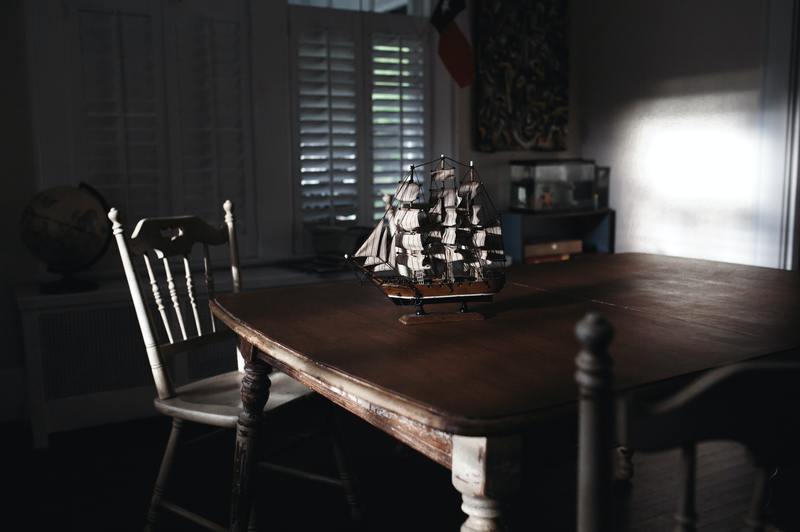The first step on how to clean mildew off antique wood furniture is to inspect the object and the extent of mildew growth. We won’t spoil the rest, so hopefully, you’ll read until the end of the article to find out more about this.

How Does Mildew Grow On Antique Wood Furniture?
Most homeowners prefer using antique wood for their furniture because of the quality of the wood. However, antique wood is more expensive than commercialized wood, and rightfully so.
Using antique wood takes more time to make, and commercialized ones cannot replicate their luxurious touch. Their reselling value is also high in the market.
However, despite its quality, antique wood is still vulnerable to mildew. However, how does mildew grow on antique wood furniture?
Well, mildew loves organic materials. Unlike mold, which can grow on plastics, mildew sticks with natural goods like wood.
Hence, it won’t be surprising to find mildew on your antique wood furniture. Moreover, the reason they settle on your belongings is that they may have water damage.
Mildew and mold love moisture. In most circumstances, water is the last criterion that they need to grow.
Since there is likely water damage on your antique wood or to the places adjacent to it, you have to check the specific area where there is water damage. Here is an article on how to inspect water damaged structural beams to give you an idea.
Signs Of Mildew Growth On Antique Wood Furniture
The one you notice the most when there is mildew growth on your antique wood furniture is the smell. The scent is similar to the earthy odor of mold.
Sometimes, people think the smell is merely due to the room being stuffy. This leads most people to open windows and doors to encourage airflow.
Improving your room’s ventilation is good. However, it doesn’t fix the root problem, and the odor would still come back after you’ve closed your windows.
Another sign of mildew growth is the presence of mildew itself. You can differentiate mildew by its texture, and there are two types.
Mildew growth can either be powdery or downy. However, we do not advise you to touch it to differentiate between the two.
Mildew is not as severe as mold when it comes to its health effects. However, the latter can still trigger some allergies.
This is why it’s necessary to still put on protective gear when you deal with mildew. The protective clothes don’t have to be complicated; long-sleeved shirts, gloves, and masks are already okay.
Steps In Cleaning Mildew Off Antique Wood Furniture
Step #1. Inspect your furniture. If the mildew growth has not invited mold along with it, then your furniture is relatively safe.
However, if it has mold, it may need some more serious cleaning and fixing. Moreover, mold tends to break down the surface it grows on, so it may depreciate the value of your furniture.
Step #2. If the mildew growth is in its early stages and has not attracted mold yet, then you may begin cleaning it. First, place the furniture outside so the spores won’t spread inside your house.
Also, the sunlight may kill some of the spores, which would make your job easier. After placing it outside, gather your materials and begin cleaning.
Get a HEPA-filtered vacuum and remove the surface mildew with it. Ensure when you dispose of the filter bag that it’s tightly sealed so the mildew spores won’t spread anymore.
Step #3. The cleaning process does not stop after the vacuuming. You have to kill the remaining invisible spores on the furniture.
Also, you have to prevent future mildew growth. You have to use products that remove and resist mildew.
You can use a bleach-free CLR mold and mildew remover so that it won’t stain your antique wood. The foam sprayer version of this product also prevents spore dispersal, so it’s recommended for use.
Here’s an article on where to buy CLR mold and mildew remover to guide you. Also, it includes five options for you to choose from.
After removing the mildew using the remover, you have to make necessary adjustments to prevent future mildew growth. Written below are some tips for mildew prevention.
Ways To Prevent Mildew Growth On Antique Wood Furniture (Or Any Furniture)
1. Do routine inspections
Mildew does not just grow out of nowhere; they need criteria to grow. To prevent mildew growth, you have to lessen their chances of meeting their growth conditions.
One way to lessen their chances is to prevent water damage. A way to avoid water damage is to do routine inspections.
Check your pipes, your ceilings, and your walls. Inspect your roof for damages as well.
2. Use dehumidifiers
Another way to prevent mildew growth is to maintain the humidity levels. You can do this by investing in a good dehumidifier.
A dehumidifier is especially useful during the changing of seasons, so you’re sure to get the bang of your buck.
Conclusion
We wrote three steps on how to clean mildew off antique wood furniture and added two tips for mildew prevention. We hope these short statements were still of help to you who are dealing with mildew problems.
